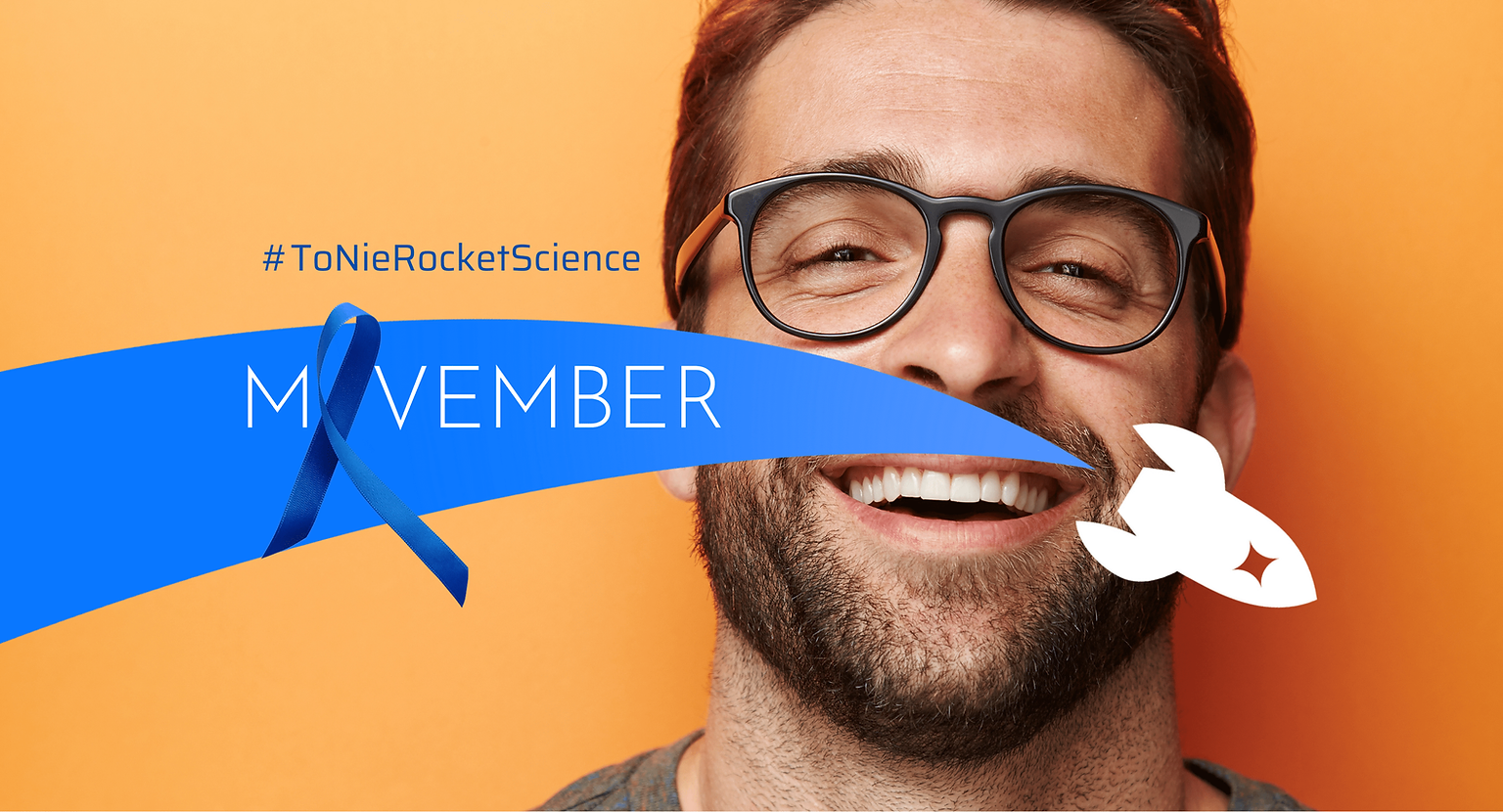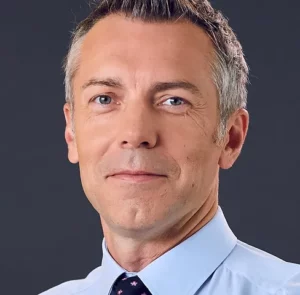
Self-examination is best performed after a warm bath, when the skin of the scrotum is relaxed.
Do not perform the test before, during or after intercourse to rule out physiological changes related to arousal.
You can perform self-examination on your own or with the help of your partner.
Lift the scrotal sac slightly with your hand, then lift each testicle one at a time.
Notice whether any of them have changed in size in a noticeable way?
Do you feel any testicles feel heavier than usual or swollen? Do you feel physical discomfort when lifted/touched?
Do you feel any changes in your skin? Lumps, ulcers? Pay attention to the skin color and see if there is any permanent redness anywhere.
Using your index finger and thumb, examine each testicle by running your thumb over its surface.
Again, pay attention to the size to see if it has changed significantly since the previous self-examination.
Pay special attention to the surface texture of the kernel – do you feel any roughness? A bulge that isn't there on the other testicle? Thickening? A hard lump or lump? Do you feel physical discomfort during touch or self-examination? Pain, burning, pressure?
Is nothing bothering you? Fantastic! Save the date for your next self-examination in a month in the calendar - it's best to always get tested on the same day :) i remind your loved one about self-examination: brother, son, father, grandfather, friend.
Are you concerned about any change?
Make an appointment with a urologist! Don't wait for other symptoms - testicular cancer can develop painlessly.
From reaching puberty.
Between the ages of 17 and 35, but cases of the disease occur even after the age of 70.
If detected early, the cure rate is practically 100% - that's why regular self-examination is so important!
No, it's probably the epididymis - if both are similar in size and shape, smooth, without any roughness or thickening, there is no reason to worry :) it's part of the male genital organs.
Self-examination should be repeated every month.
Scroll down and download a free calendar of preventive tests for men with a detailed list of tests divided into age categories!
Testicular cancer: genetic factors, cryptorchidism (congenital misplacement of the testicle), age (15-35)
Prostate cancer: age 50+, genetics (family history of prostate cancer), sexual abstinence, urinary tract inflammation, alcohol.
Prostate cancer prevention includes maintaining a healthy lifestyle, adequate exercise, a healthy diet, avoiding obesity, excess stress, and stimulants, especially smoking. It is recommended to reduce the amount of red and processed meat in the diet, which particularly increases the risk of prostate cancer.
Answered by Dr. Hab. n. med. Roman Sosnowski, urologist

Movember is a special time of the year when we encourage men to take serious care of their "male urological health". One of the most important first steps is to see a urologist. A special group of men who should take care of their urological health a little earlier are people who have cancer in their immediate family. During the visit, the doctor will carefully take an interview, assess your current health condition, perform a physical examination and prepare a plan for further tests/visits. All this to have a chance to detect testicular or prostate cancer at an early, asymptomatic stage. Then we have a chance to use effective treatment methods that guarantee permanent oncological cure with minimal side effects caused by a given therapy.
As urologists, we encourage men to change their lives to eliminate or reduce those elements that are negative factors in the development of urinary tract cancers. Avoiding obesity, maintaining a proper diet similar to the so-called a Mediterranean diet, avoiding stimulants at all costs, especially smoking, and maintaining an active, sporty lifestyle - these are activities that not only improve the effectiveness of prostate cancer treatment, but also reduce other lifestyle diseases.
Ph.D. n. med. Roman Sosnowski, urologist
Urology Office – www.uros.pl
Self-examination should be performed monthly, preferably between the 5th and 9th day after menstruation, when the breasts are the least sensitive.
We can safely start self-examination after the age of 20.
Yes, the lump can have different shapes - round, smooth, rough, scratchy and even angular and sharp.
On average, a 2 cm cancerous tumor takes about 8 years to grow, so we have a lot of time to find it ourselves during self-examination.
Yes, you can (and should!) carry out self-examination as normal.
In the case of a family history of cancer - from the age of 20, breast ultrasound every six months and mammography every year. Women without family burden - after the age of 40, breast ultrasound and mammography every two years.
Women aged 50-69 can have a free mammogram every two years as part of a preventive screening program.


An oncological diagnosis always comes to us when we least expect it. The question is whether it is possible to prepare for this moment at all. Each of us knows that we are mortal and that more and more people are suffering from lifestyle diseases. However, when the disease affects us directly, the question often arises - why me?
When I talk to the beneficiaries of our Foundation, I encourage them to treat the disease as a stage in life that must be overcome and closed, and to do everything to ensure that this history never happens again.
When people who have just been diagnosed with cancer call me on the hotline and ask what to do, I answer: brew some lemon balm, take a notebook, a pen and treat this disease like a project that has its own tasks, schedules, budgets, people responsible for specific stages. . This makes it much easier to organize yourself in this difficult reality.
| Cookie | Duration | Description |
|---|---|---|
| __cf_bm | 1 hour | This cookie, set by Cloudflare, is used to support Cloudflare Bot Management. |
| _GRECAPTCHA | 5 months 27 days | This cookie is set by the Google recaptcha service to identify bots to protect the website against malicious spam attacks. |
| cookielawinfo-checkbox-advertisement | 1 year | Set by the GDPR Cookie Consent plugin, this cookie is used to record the user consent for the cookies in the "Advertisement" category . |
| cookielawinfo-checkbox-analytics | 1 year | Set by the GDPR Cookie Consent plugin, this cookie is used to record the user consent for the cookies in the "Analytics" category . |
| cookielawinfo-checkbox-functional | 1 year | The cookie is set by the GDPR Cookie Consent plugin to record the user consent for the cookies in the category "Functional". |
| cookielawinfo-checkbox-necessary | 1 year | Set by the GDPR Cookie Consent plugin, this cookie is used to record the user consent for the cookies in the "Necessary" category . |
| cookielawinfo-checkbox-others | 1 year | Set by the GDPR Cookie Consent plugin, this cookie is used to store the user consent for cookies in the category "Others". |
| cookielawinfo-checkbox-performance | 1 year | Set by the GDPR Cookie Consent plugin, this cookie is used to store the user consent for cookies in the category "Performance". |
| CookieLawInfoConsent | 1 year | Records the default button state of the corresponding category & the status of CCPA. It works only in coordination with the primary cookie. |
| PHPSESSID | session | This cookie is native to PHP applications. The cookie is used to store and identify a users' unique session ID for the purpose of managing user session on the website. The cookie is a session cookie and is deleted when all the browser windows are closed. |
| Cookie | Duration | Description |
|---|---|---|
| mailchimp_landing_site | 1 month | MailChimp sets the cookie to record which page the user first visited. |
| Cookie | Duration | Description |
|---|---|---|
| _ga | 2 years | The _ga cookie, installed by Google Analytics, calculates visitor, session and campaign data and also keeps track of site usage for the site's analytics report. The cookie stores information anonymously and assigns a randomly generated number to recognize unique visitors. |
| _ga_* | 1 year 1 month 4 days | Google Analytics sets this cookie to store and count page views. |
| _ga_P35QL3EFP9 | 2 years | This cookie is installed by Google Analytics. |
| _ga_V0MTP2PTB9 | 2 years | This cookie is installed by Google Analytics. |
| _gat_gtag_UA_* | 1 minute | Google Analytics sets this cookie to store a unique user ID. |
| _gcl_au | 3 months | Provided by Google Tag Manager to experiment advertising efficiency of websites using their services. |
| _gid | 1 day | Google Analytics sets this cookie to store information on how visitors use a website while also creating an analytics report of the website's performance. Some of the collected data includes the number of visitors, their source, and the pages they visit anonymously. |
| CONSENT | 2 years | YouTube sets this cookie via embedded youtube-videos and registers anonymous statistical data. |
| Cookie | Duration | Description |
|---|---|---|
| _fbp | 3 months | This cookie is set by Facebook to display advertisements when either on Facebook or on a digital platform powered by Facebook advertising, after visiting the website. |
| fr | 3 months | Facebook sets this cookie to show relevant advertisements to users by tracking user behavior across the web, on sites that have Facebook pixel or Facebook social plugin. |
| I'M GOING | 1 year 24 days | Google DoubleClick IDE cookies store information about how the user uses the website to present them with relevant ads according to the user profile. |
| NID | 6 months | Google sets the cookie for advertising purposes; to limit the number of times the user sees an ad, to unwanted mute ads, and to measure the effectiveness of ads. |
| test_cookie | 15 minutes | The test_cookie is set by doubleclick.net and is used to determine if the user's browser supports cookies. |
| VISITOR_INFO1_LIVE | 5 months 27 days | A cookie set by YouTube to measure bandwidth that determines whether the user gets the new or old player interface. |
| YSC | session | YSC cookie is set by Youtube and is used to track the views of embedded videos on Youtube pages. |
| yt-remote-connected-devices | never | YouTube sets this cookie to store the video preferences of the user using embedded YouTube video. |
| yt-remote-device-id | never | YouTube sets this cookie to store the video preferences of the user using embedded YouTube video. |
| yt.innertube::nextId | never | This cookie, set by YouTube, registers a unique ID to store data on what videos from YouTube the user has seen. |
| yt.innertube::requests | never | This cookie, set by YouTube, registers a unique ID to store data on what videos from YouTube the user has seen. |
| Cookie | Duration | Description |
|---|---|---|
| alg_wc_oma_has_notices | past | Description is currently not available. |
| PAPCookie_Imp_79b272ee | 1 year | Description is currently not available. |
| VISITOR_PRIVACY_METADATA | 6 months | Description is currently not available. |
FUNDACJA ONKOLGICZNA RAKIETY (ROCKETS ONCOLOGY FOUNDATION)
The Foundation's account number at ING Bank Śląski:
52 1050 1025 1000 0090 3010 4252
SWIFT: INGBPLPW
IBAN: PL 52 1050 1025 1000 0090 3010 4252
NIP: 521-362-85-70
REGON: 146040727
The Foundation is a Public Benefit Organization,
registered under number
KRS: 0000414091
Stryjenski Street 19, apartment U21/21A
(intercom 821)
02-791 Warsaw
[email protected]
22 299 29 28
Copyright © 2022 Rakiety Oncology Foundation. All rights reserved.